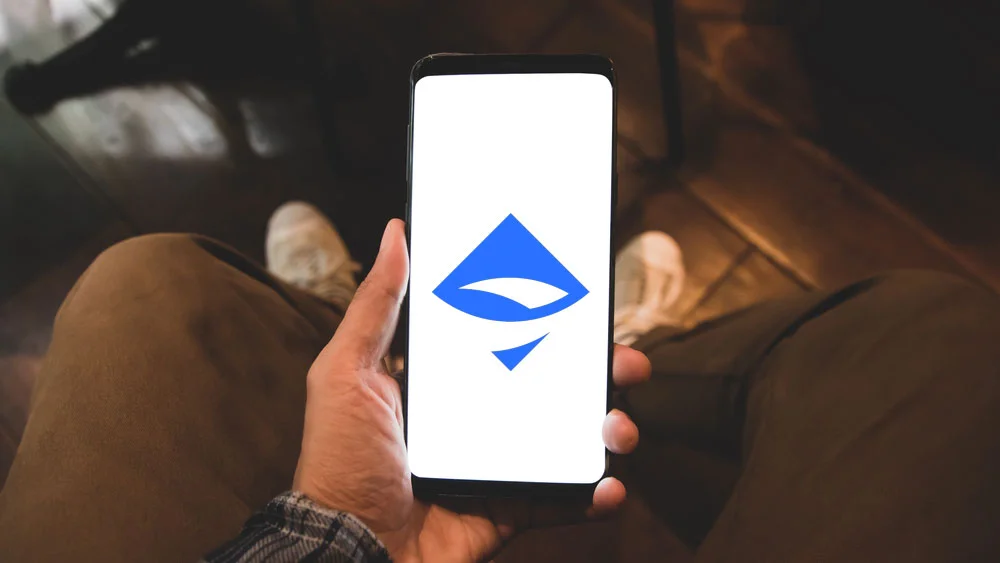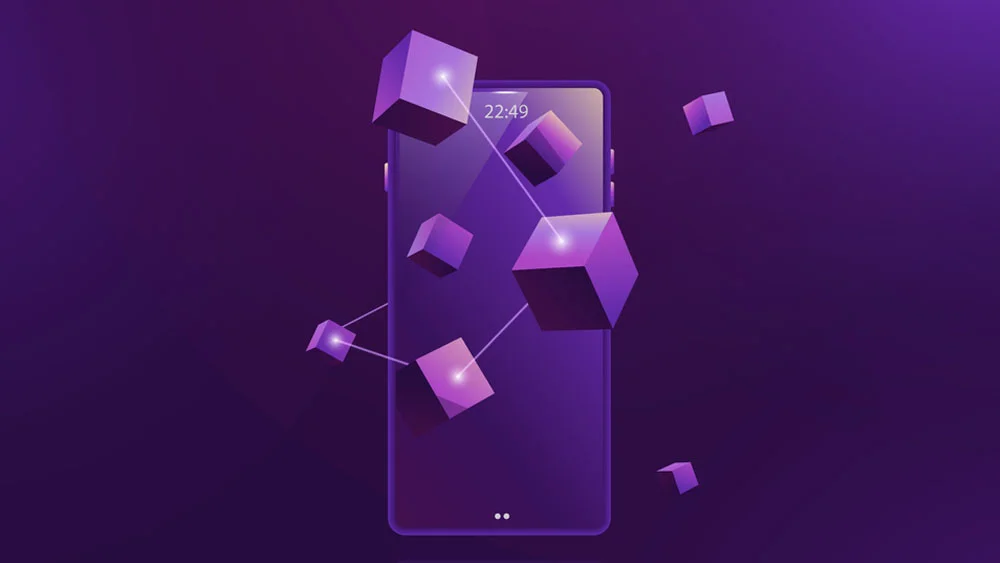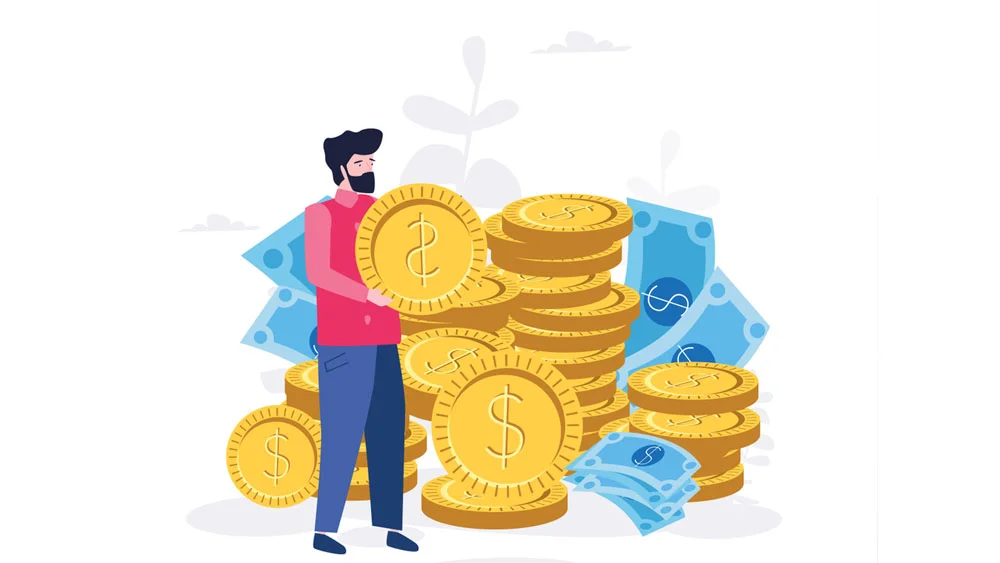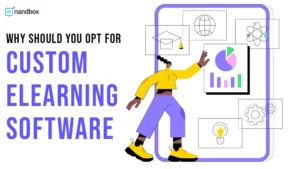The Future of Decentralized Finance: A Guide to Financial Freedom
There is no doubt that apps have transformed many fields completely. It is astonishing how apps can make many operations that we thought were forever difficult as simple as they can. The finance sector is one area where the capabilities of apps have had a significant impact. We would never, in a million years, have imagined that we could control all our assets and financial accounts through our mobile phones with only one simple tap. However, it is pretty much real now. Additionally, the merging of apps with advanced technologies like artificial intelligence and blockchain has taken financial apps to a whole new level. In this article, we will explore the future of decentralized finance and how it can be life-changing in the next few years.
What Is Decentralized Finance?
Before we get to explore the future, we have to answer a very important question. What is decentralized finance? Decentralized finance, or DeFi, is, according to many, the ultimate and most advanced form of financial apps and operations. To be more specific and clear, decentralized finance means controlling and managing day-to-day financial operations yourself via a peer-to-peer exchange rather than through intermediaries.
Usually, to access anything that has to do with your finances, or make any transaction, you’d have to go through intermediaries like bankers and brokers. These people control and govern these financial systems. This cycle was a burden to many. As it usually took much time and effort to accomplish just one thing out of many. However, the emergence of decentralized finance, which is based on eliminating dependence on any intermediaries, made it easier and simpler for clients to take control of these operations all by themselves. This way, clients get to access all the operations, like getting FHA loans or maverick trading stocks, which typically require intermediaries to accomplish.
Future of Decentralized Finance: What Technologies Are Used to Create Such Apps?
Now that we know that decentralized finance doesn’t include any mediators that clients turn to to accomplish things. We need to ask a question, how is that possible? Well, this is very much possible through the implementation of two prominent technologies. These technologies have shifted the future of decentralized finance to be much better and more doable. These two technologies are cryptocurrency and blockchain.
Cryptocurrency
Cryptocurrency is, of course, known to many people, as it now plays a vital role in online investments and retail. It is a form of digital currency that has the same value that a real currency would have, maybe even more. Cryptocurrencies are used solely in digital marketplace transactions. People all around the world can send and receive payments using these cryptocurrencies in safe and ultimately secure transactions. The reason behind using cryptocurrencies is that they don’t require the verification of any bank or financial instructions. What a user would usually do is begin by purchasing any cryptocurrency, such as bitcoins or Ethereum. Then, he’d create a digital wallet to store them. Finally, he can start making investments through decentralized finance apps.
Blockchain
So now that one part is done, how do these transactions get recorded? We know that in centralized finance, they store transactions in entries and ledgers. In decentralized finance, the same thing is done: transactions get recorded in entries and ledgers but in a slightly different way. Blockchain is the second technology used and implemented in decentralized finance. It is a secure and safe database system that consists of ledgers and records in the form of growing and interconnected blocks.
Blockchain makes the process of keeping and tracking transactions so easy for all fields, not just finance. Additionally, it is not limited to only digital assets and cryptocurrencies; you can use it to store any type of financial asset or data, whether tangible or intangible. This makes it an invaluable technology in all fields. It is worth mentioning that blockchain records are impossible to change or modify, and no one can access them. As they are stored in a secure and encrypted environment, which eliminates any chance of fraudulent activity.
Benefits of Using Decentralized Finance Apps
Lower Fees and Higher Returns
Compared to traditional financial institutions, the fees associated with using decentralized finance apps are far more reasonable. With decentralized finance, there are no intermediaries, so investors pay less in fees and earn more on their investments. This is because blockchain technology, upon which decentralized finance apps are built, ensures both the safety and transparency of financial transactions while eliminating the need for mediators. When compared to centralized finance, the interest rates offered by decentralized finance apps for savings and investments are much more attractive.
Increased Security and Transparency
Enhanced security and transparency in your financial transactions are other advantages of using decentralized finance apps. Because of blockchain’s immutability and transparency, no one ca modify or even view transactions in decentralized finance apps. As all users can now view and validate their transactions, this greatly aids in reducing instances of fraud and other forms of financial crime. Multi-factor authentication and encryption are two of the common security safeguards usually found in decentralized finance apps. The financial management process can be made more reliable and accessible with the use of decentralized finance apps.
Accessibility and Inclusivity
When compared to centralized finance, decentralized finance apps provide better accessibility. Regardless of where they live or their social status, anyone with an internet connection can use decentralized finance to gain access to banking services. This is especially crucial for those who may be excluded from using conventional banks due to their identities or who experience bias when attempting to use their services. Decentralized finance apps also typically provide more adaptable financial services, so that customers may customize their asset management to their unique needs and preferences.
Innovation and Flexibility
The adaptability and uniqueness of decentralized finance apps are two of their most attractive characteristics. Decentralized finance apps are built on blockchain technology, which provides greater flexibility and customization of financial assets than is available from traditional financial institutions. Because of this, users are no longer restricted to standard financial services that don’t meet their own needs. Furthermore, decentralized finance apps are always steadily improving and include novel capabilities and services. For a more personalized and versatile financial experience, decentralized finance apps are an ideal option.
Risks and Challenges of Using Decentralized Finance Apps
Safety and Security Risks
No matter how secure and safe decentralized finance apps are, there is always a chance or risk of a data breach or fraud. The more technologies get advanced, the more fraudsters and hackers come up with more powerful methods and strategies to identify vulnerabilities and breach these apps. This leads to major consequences and the loss of millions and millions of dollars.
User Error
Decentralized finance apps are based on the idea of eradicating the concept of middlemen and intermediaries. In addition to allowing users to be in control of all financial operations and transactions. This leaves a space for users to do whatever they want with their investments and assets, while also increasing the chance of user error. This error can, of course, vary in how significant it is. Some errors may pass by without any consequences, some can lead to the loss of some money. Or worse, some can lead to the loss of all money and assets. This is why, before engaging with and using decentralized finance apps, users should research the concept and apps and how they should use them.
Governmental Risks
No matter how decentralized finance is advanced, considered the future by many, it is still very novel. Being novel has many challenges, including unexplored risks and the lack of laws regulating the whole process of investing and engaging in decentralized finance activities. This allows many fraudsters to take advantage of such things and use decentralized finance apps fraudulently. In turn, many countries and governments limit or even prohibit the use of decentralized finance apps, putting all their users at risk of violating the law. To prevent any issues, research your country’s laws regarding cryptocurrencies and remember that they are subject to taxes. Educate yourself on reporting your crypto taxes to ensure compliance with the law.
Types of Decentralized Finance Apps
Decentralized finance apps are not only for sending and receiving payments, the services that these apps offer go way beyond that. This is why there is more than one type or specialization of decentralized finance apps. So, let us explore the most important types of decentralized finance apps
Asset Management
The first type of decentralized finance app is an asset management app. Asset management apps are the ultimate instruments through which a user can take full control of all crypto and digital assets. These apps include digital wallets where users can save all their assets. Additionally, they could securely transfer, invest, sell, and do many more financial activities through asset management apps. Asset management oversees various assets broadly, while Brand Asset Management (BAM) specifically focuses on optimizing and maintaining a company’s brand-related digital assets.
Lending and Borrowing
Decentralized lending and borrowing platforms are another popular type of decentralized finance app. These platforms allow users to lend and borrow cryptocurrency without the need for a traditional financial institution. Instead, users can lend and borrow directly from each other, with the platform acting as a facilitator. Users can also earn interest by lending money to other users, as many of these apps offer varied rates of interest where users can choose whatever they like.
Exchange and Liquidity
There are two main categories of decentralized financial apps: exchange and liquidity. However, we can pretty much say that developers usually merge them into one app. A decentralized exchange removes the necessity for a third party or a middleman like a broker to trade cryptocurrency between users. This provides an increased degree of anonymity, safety, and ownership over one’s assets. When users contribute liquidity, they are rewarded with a cut in trading fees. Cryptocurrencies like Render, Ethereum and Bitcoin are used solely in digital marketplace transactions. People all around the world can send and receive payments using these cryptocurrencies in safe and ultimately secure transactions.
Popular Decentralized Finance Apps to Try Out
Now that you practically know everything about decentralized finance apps, it is time to provide you with the best-decentralized finance apps that you could use.
Aaeve
Starting strong with Aaeve. Aaeve is a well-known DeFi app that specializes in borrowing and lending. Aaeve started as a decentralized finance platform. They then launched their app in 2017 to allow more users to enjoy the astonishing capabilities and future of decentralized finance. This app allows users to borrow and lend cryptocurrency to and from other users directly. It also allows users to earn interest on all their crypto savings and assets.
Gnosis Safe
Gnosis Safe, now known as “Safe,” is one of the most popular asset management DeFi apps. Through this app, users can manage and control their digital assets and cryptocurrencies anywhere and anytime. This app also provides more than one storage method for these digital assets. Additionally, users can store them on multiple devices. The app also has the option of a multi-signature wallet, where a transaction can’t be finalized without the signature of a specified number of users.
AirSwap

AirSwap is another prominent decentralized finance app that specializes in exchange and liquidity. This app allows users to connect their digital wallets and start exchanging without any external intervention or intermediaries, only peer-to-peer exchanges. These exchanges have no fees or limitations that are usually found with centralized finance exchanges. This makes the app favored by many who like to invest in cryptocurrencies
Dharma
Our last app on the list is Dharma. The Dharma app is a game-changing decentralized finance platform. It facilitates user access to and participation in a wide range of blockchain-based financial services. The Dharma app allows its users to participate in a variety of banking and financial transactions directly with one another. Which bypasses traditional intermediaries such as banks and centralized exchanges. The app utilizes blockchain technology to provide users with more control over their finances, information, and assets.
Final Thoughts
As much as the idea of decentralized finance apps is very prominent, we can’t really guarantee whether it will continue improving or decline at a certain point. As with anything else in life, decentralized finance has its pros and cons. With its greatest con being the lack of governmental regulations and illegalization in many places around the world. However, only time will tell the future of decentralized finance and which side will dominate. Will this prominent technology prove us wrong, be more beneficial, and eliminate all risks? Or would the risks and challenges win the battle?







